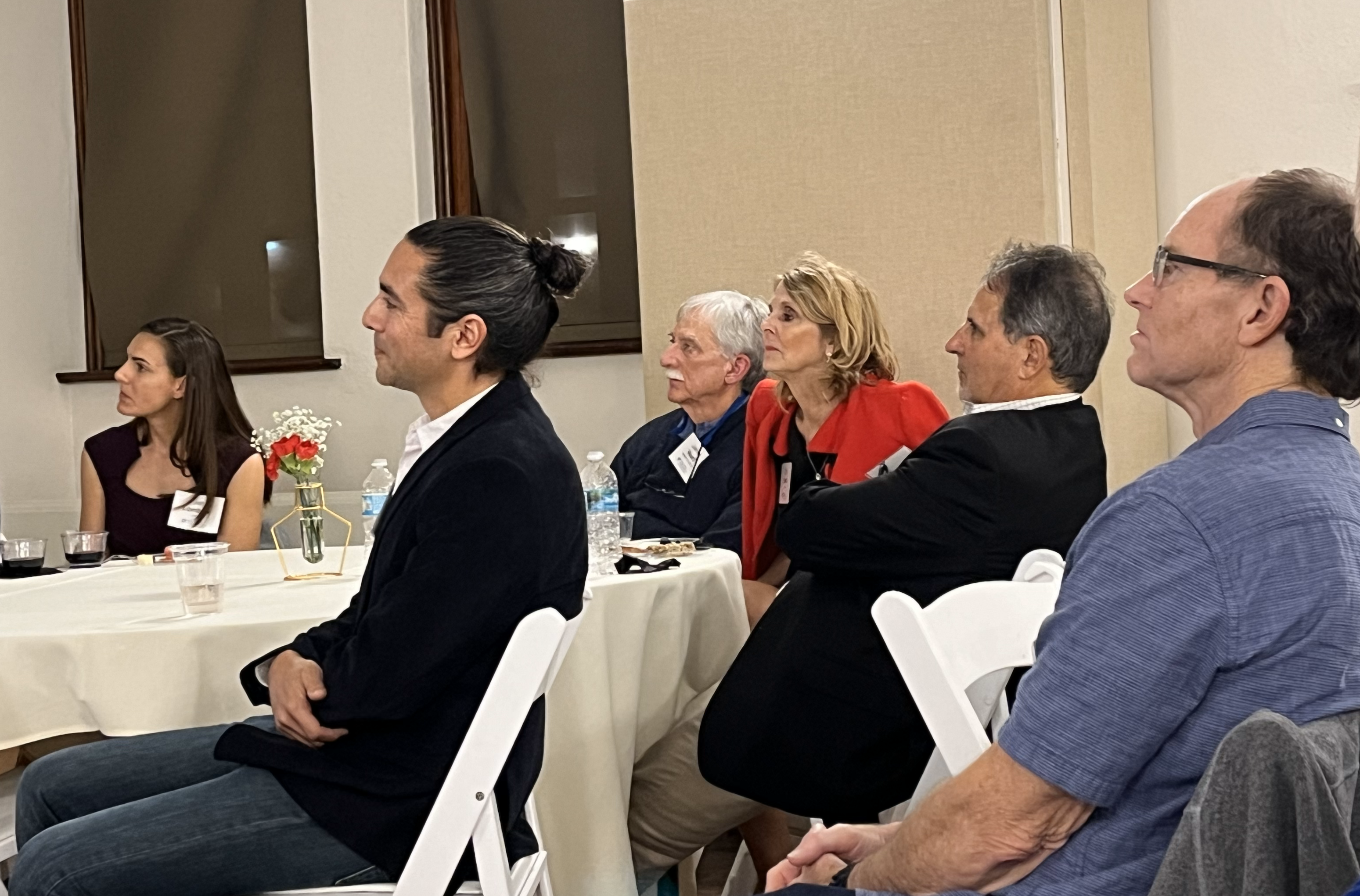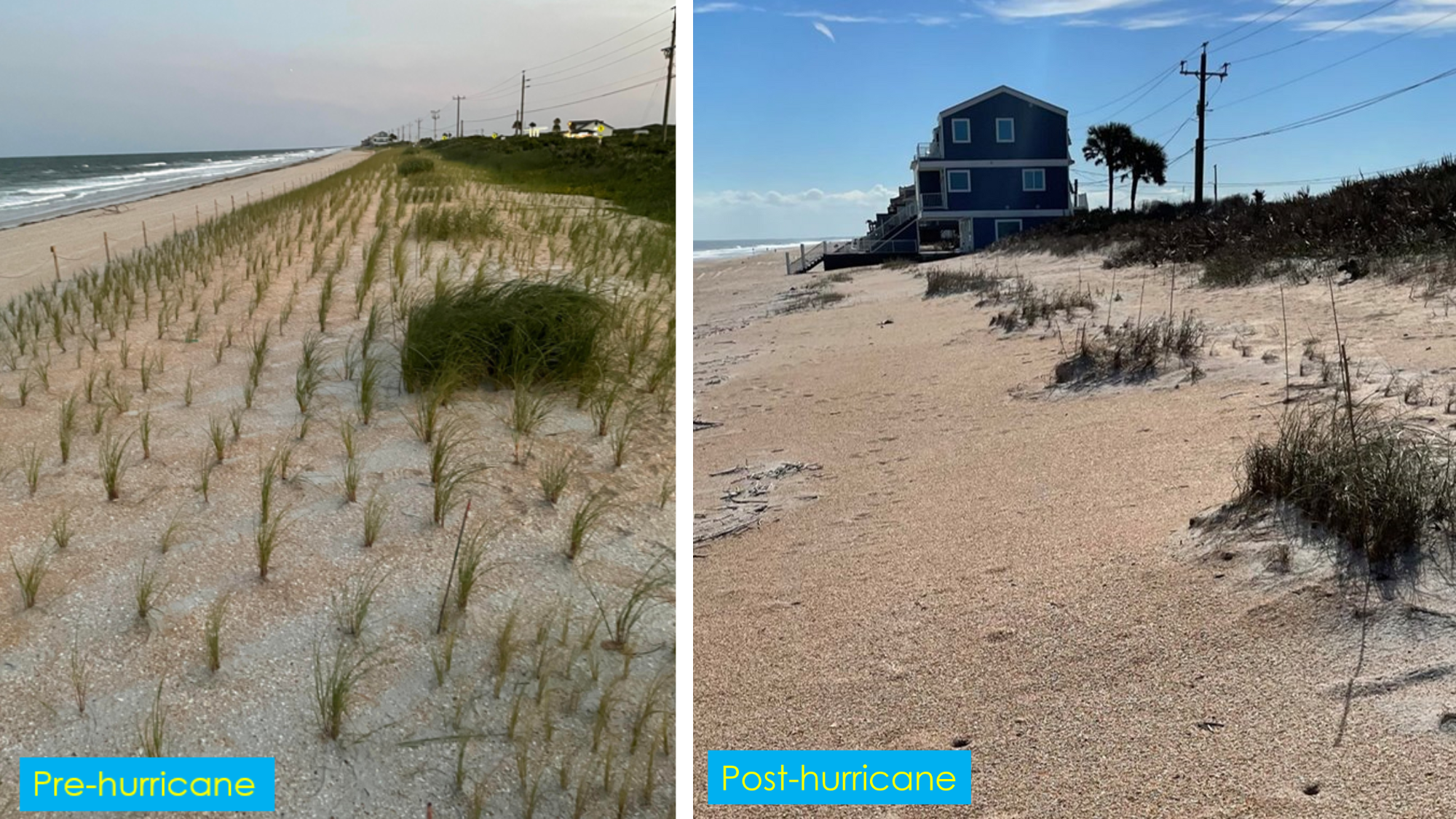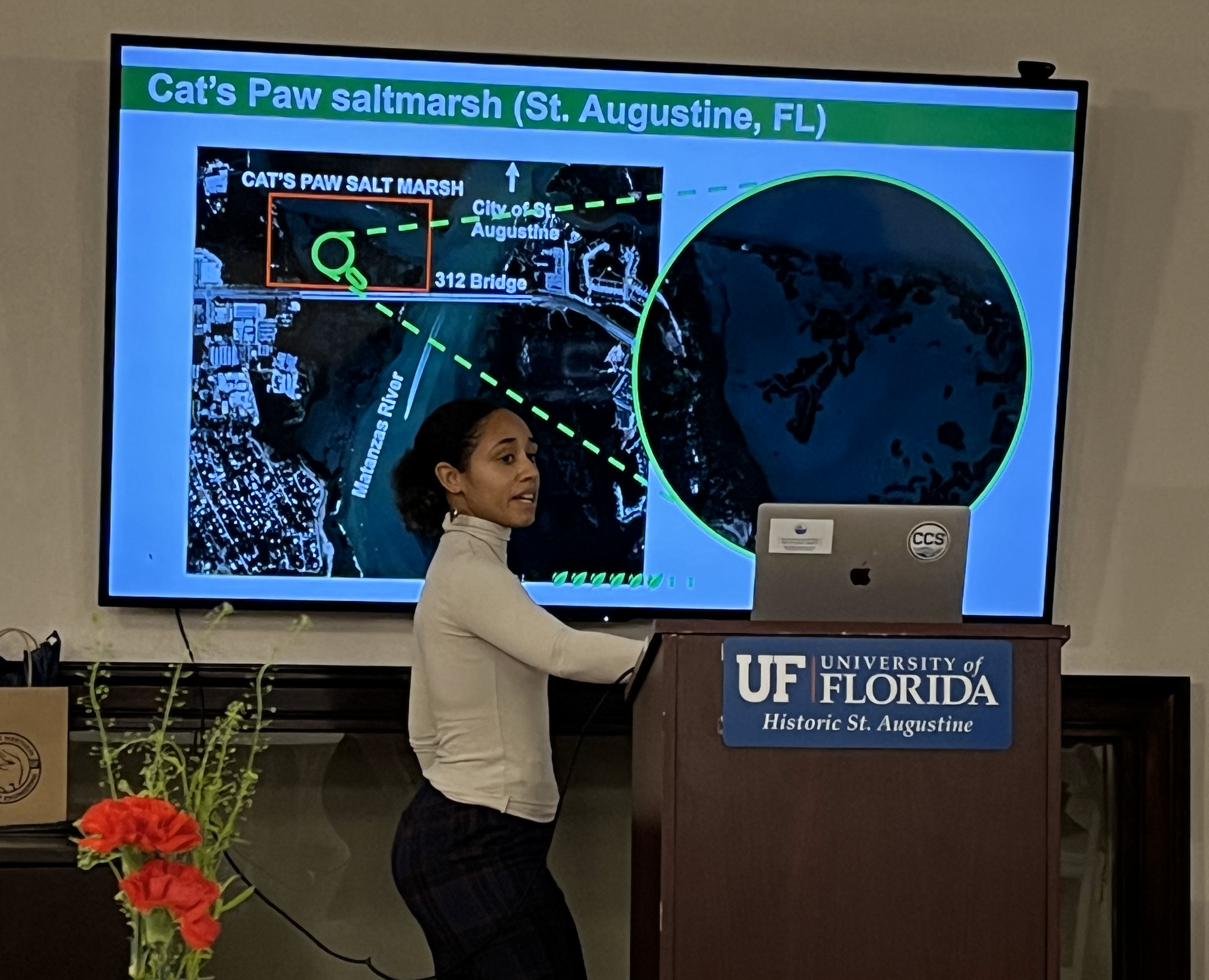More than 60 University of Florida engineering alumni gathered at the Governor’s House Cultural Center and Museum in St. Augustine on December 13 to learn about the Center for Coastal Solutions’ (CCS) research to address coastal challenges faced by the city.

“What struck me is just how many of the UF alumni at the event have an immediate personal stake in sea level rise and coastal hazards because they live in high-risk areas on or near the water,” said Andrew Altieri, Ph.D., assistant professor in the environmental engineering sciences department. “They seem comforted by the fact that the best and brightest from UF engineering are directing attention and resources towards the development of solutions!”
Altieri provided an overview of the Engineering With Nature project to accelerate the revegetation of rapidly retreating coastal dunes, reinforcing their resilience against erosion. Through new planting techniques and nutrient addition, CCS scientists achieved a remarkable nearly 3000% increase in vegetative growth over that of traditional planting methods, enabling the dunes to grow more quickly. Larger dunes offer more protection for coastal communities and infrastructure.

Ph.D. student Britney Hay also shared some of the research she is doing in St. Augustine that has implications for addressing coastal hazards. Hay shared preliminary results of a plot-scale study testing sediment application, known as thin layer sediment placement, in a salt marsh being affected by sea level rise. Despite an initial decline due to burial and death, sediment treatments are showing signs of recovery a year later, indicating that there is potential for sediment addition to boost marsh resilience.

CCS researchers are also using of satellite imagery to understand the movement of sand from the coast, which could better inform decisions as to where and how to nourish beaches along the coast to compensate for erosion, noted Altieri.

“It was great to see a scientific approach to optimize dune restoration and improve chances for long-term success,” said Gary Miller, a long-term beach resident of Crescent Beach and UF alumni. “Having watched multiple beach restoration projects over the last three decades in St. Augustine and Crescent Beach, I’m now hopeful the sands and dunes of these great beaches might be successfully stabilized to protect wildlife habitats and the adjacent property we all value.”
The CCS is grateful to Zack and Cathy Smith for hosting this event.